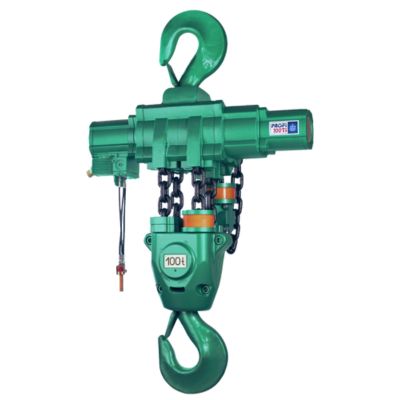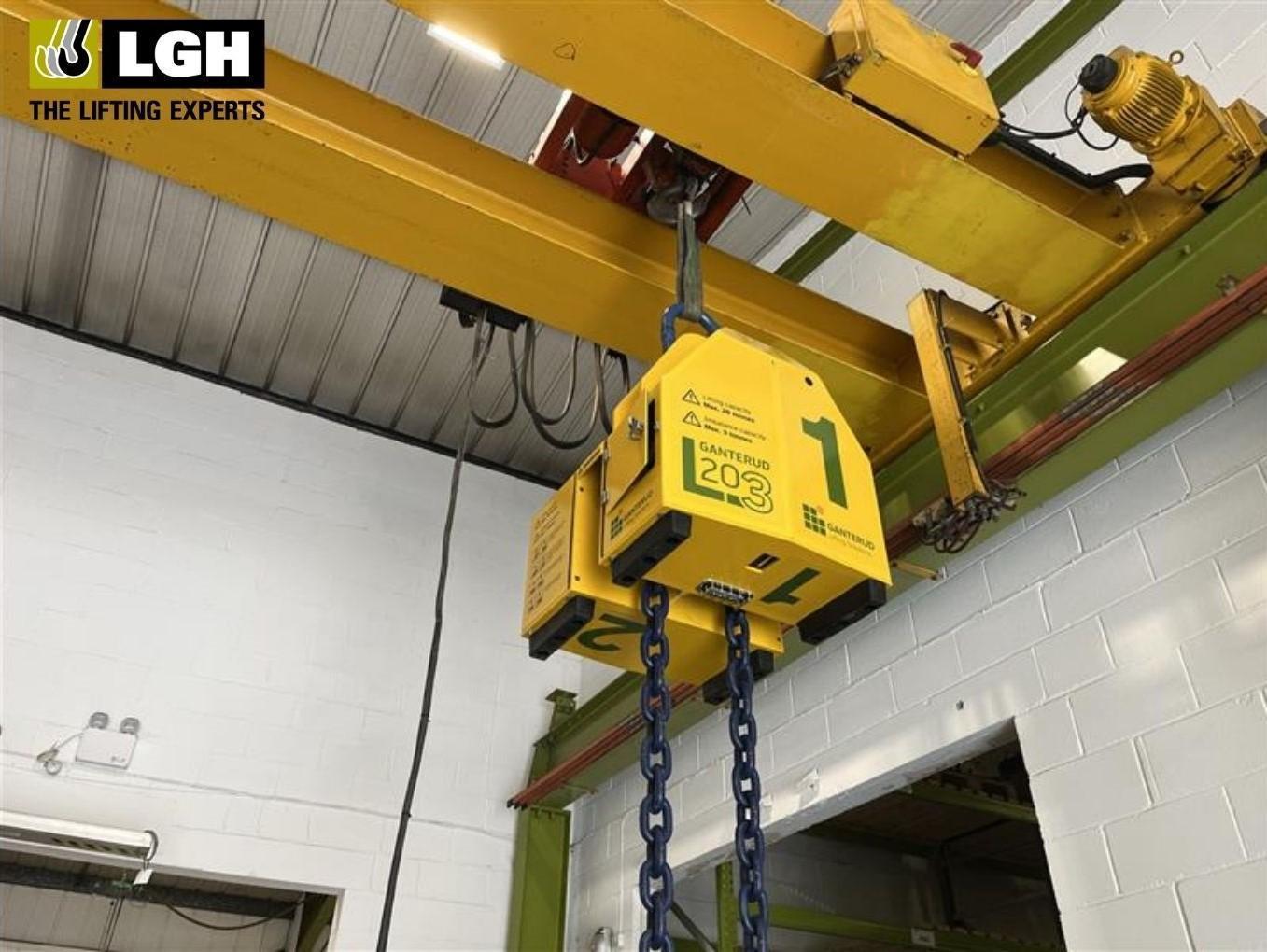Chain Hoists are essential tools for lifting and moving heavy loads in various industries. Depending on your load and the environment the lift is taking place in a Hand Chain Block may not be the most appropriate or safest chain block to be used.
As well as manually powered chain blocks there are air and electric powered hoists that require external power sources. The right choice of a chain hoist can significantly impact the efficiency, safety, and productivity of your work site.
This blog aims to analyse and compare three types of chain hoists - Air Chain Hoist, Hand Chain Hoist, and Electric Chain Hoist - to determine the most appropriate option for specific lifting requirements and environments.
AIR CHAIN HOIST
Air Chain Blocks, also known as pneumatic blocks, use compressed air to operate. They are commonly used in various industries such as construction, infrastructure and offshore and powerplants. With a lifting capacity of 100t, they are widely used in industries that require heavy lifting and are often preferred due to their durability, safety, and performance.
With zero loss of productivity, you are able to run it pratically non stop and with little to no maintenance. They are typically used with a pendant that allows safe operation of the hoist from a distance.
Pros:
- Adjustable lifting speed: Slower speeds allows for precise control of load movement.
- Explosion-proof: Suitable for use in hazardous environments with flammable materials.
- Low maintenance: Fewer components to wear or break, requiring less maintenance.
- Continuous duty cycle: Capable of operating for long periods without overheating thanks to air cooling.
- High lifting capacity: Or fleet goes up to 100t.
Cons:
- Requires a compressed air source: Not always available or accessible and if/when it is, it demands more time and energy of the worker to properly pump air into it and give it regular maintenance to ensure it operates at optimum levels.
- Noisier operation: Can be disruptive in noise-sensitive environments.
- Cannot be carried: Heavier than a Hand Chain Hoist


HAND CHAIN HOIST
Pros:
- No power source required: Cost-effective and versatile in various environments.
- Simple operation: Easy to use, with minimal training required.
- Lightweight, compact and portable: Can be easily moved between locations.
- No spark risk: Can be used in potentially explosive areas.
- Few complicated parts: Easy to maintain and repair.
- Accurate manual control: Precision lifting and lowering of loads.
Cons:
- Time-consuming: Manual operation can be slower.
- Strenuous: Loads move slowly so longer height of lifts can be labour-intensive.
- Limited lifting capacity: Typically suitable for lighter loads up to 30t.


Hand Chain Blocks, also known as manual blocks, are operated by pulling a chain by hand. Designed to lift a maximum weight of 30t, they are commonly used for smaller lifting tasks and do not require any external power source. The Chain Block is perfect for all lifts including specialist environments in sectors with hazardous areas and where there is limited room to transport equipment, such as Offshore and Infrastructure.
They are lightweight, compact and rugged, so their low head room allows for easy installation in even the most restricted of lifting environments. From car mechanics to construction you can find hand chain hoists in use, giving people the ability to lift loads they wouldn't normally be unable to.
Pros:
- Faster operation: Reduces time spent on lifting tasks.
- Remote control options: Allows for safer operation from a distance.
- Constant voltage: Less physical demand and reduction of strain for wokers.
- Protective system: the hoist will shutdown to avoid overload and potentially breaking.
- No drifting: Electromagnetic braking system prevents drifting
Cons:
- Requires an electrical power source: Additional infrastructure and energy needed.
- Higher initial cost: More expensive than hand chain hoists.
- Maintenance requirements: More complex components can require more maintenance.
- Duty cycle: Not capable of operating for long periods without overheating.
- Limited lifting capacity: Suitable for lifting loads up to 10t.


ELECTRIC CHAIN HOIST
Electric Chain Blocks are powered by an electric motor, providing a fast and efficient method for lifting heavy loads. They are commonly used in various industries, including construction, manufacturing, and warehousing and are best suited for elevator lifts.
With a lift capacity of up to 10t, you can operate the controls from any angle and can provide you longer heights of lift. Since it's powered by electric, constant voltage is flowing through it, resulting in less physical demand and great reduction of strain and fatigue on the worker. The protective system will shut the hoist down before it’s overloaded to ensure it doesn’t break.
CONCLUSION
To determine the most appropriate chain hoist for your lifting requirements and environment, consider the following factors:
- Lifting capacity: Choose a hoist with the appropriate capacity for your load.
- Power source availability: Consider the availability of compressed air or electricity in your environment.
- Work environment: Assess the presence of hazardous materials, noise sensitivity, or space constraints.
- Budget: Evaluate initial costs, maintenance, and energy requirements.
By considering these factors and weighing the pros and cons of each hoist type, you can select the most suitable chain hoist to optimise efficiency, safety, and productivity in your workplace.
Contact our expert team on 03704 247 247 or email us at enquiries@lgh.co.uk. You can also complete the Contact Us form or alternatively use our chat box and we'll get back to you as soon as possible.






